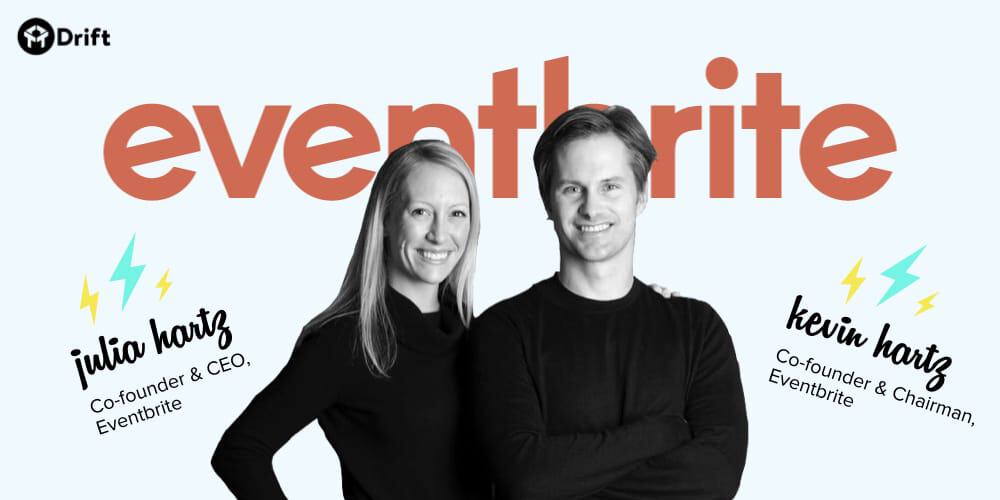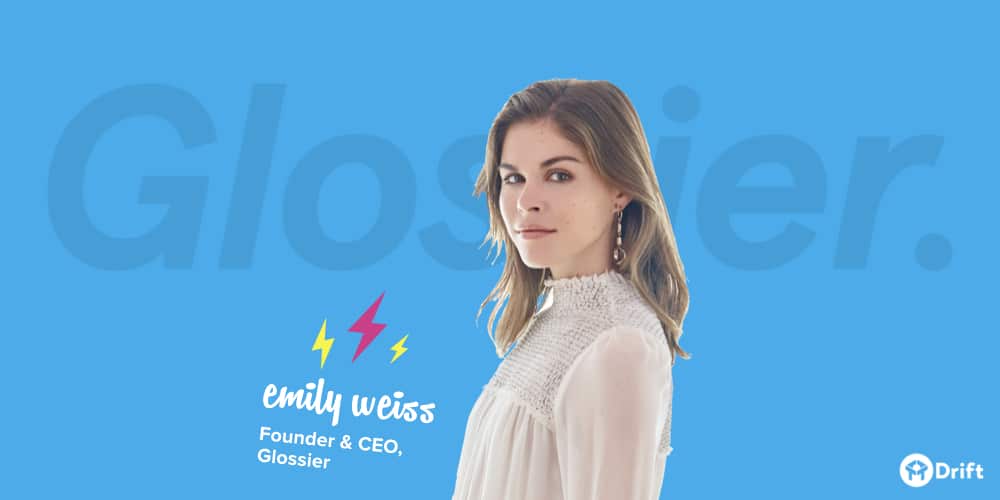
A research firm recently estimated the global beauty products market to be worth $532 billion.
That’s big.
Really big.
(For some perspective, the global digital marketing software market is estimated at $35 billion.)
And here’s the thing: revenue growth in the beauty industry shows no signs of slowing down. The pie keeps getting bigger and bigger. By 2024, one firm estimates it could be worth a whopping $864 million.
Now, it doesn’t take a business degree to recognize the tremendous opportunity there. The tricky part, however, is figuring out how to unseat the long-standing, well-established industry stalwarts like L’Oreal, Estee Lauder, Avon, Olay, Nivea, and Neutrogena — all of which are multi-billion-dollar brands. For decades, they, along with a handful of other multi-billion-dollar brands, have thoroughly dominated the beauty market.
Then along came Emily Weiss, a former teen model and intern turned TV star (she had a brief stint on the show The Hills) turned fashion assistant at Vogue. In 2010, Emily launched the beauty blog Into the Gloss, which, in its heyday, earned nearly 10 million page views per month. In 2014, Emily unveiled a new, affordable line of beauty products designed specifically for her Into the Gloss readers. And voilà: Glossier (pronounced “gloss-ee-ay”) was born — a direct-to-consumer beauty brand that now has the entire industry on its toes. As Emily, Glossier’s founder and CEO, recently told Bloomberg:
When you look at these incumbents like, say, an Estee Lauder or L’Oreal, in ten years time with the way consumer behavior is going, those may not be the most dominant players. We believe that Glossier has every opportunity to fill in that space.
So far, Glossier is on track to do exactly that. Case in point: In 2018, the company brought in $100 million in annual revenue, marking their fourth consecutive year achieving triple-digit revenue growth. Also in 2018, Glossier closed a Series C round of funding worth $52 million, bringing their total VC funding raised to a cool $86 million.
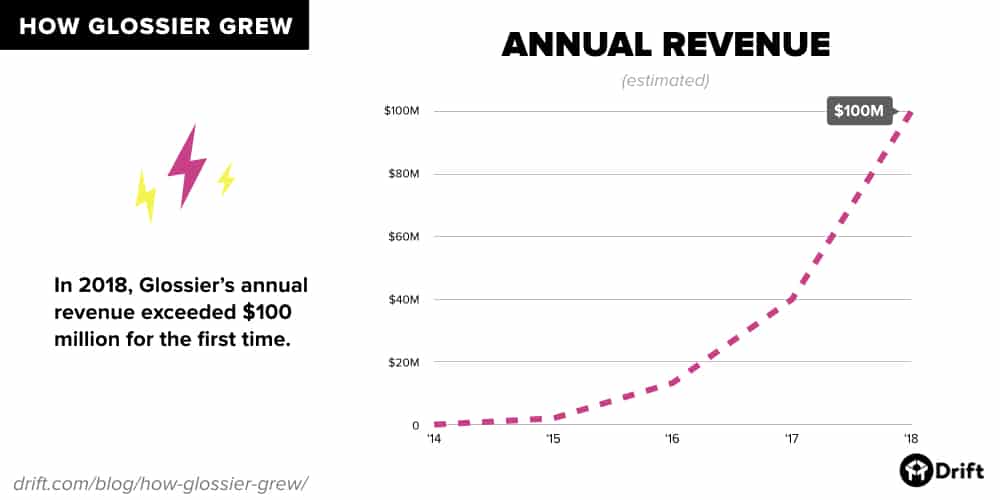
Of course, when you look at this type of extraordinary growth, it begs the question: how did Glossier do it?
Keep reading for a deep dive into the four key secrets that Glossier used to grow from $0 to $100 in annual revenue in less than five years.
In a hurry? Here’s the tl;dr version:
- Encourage customers to tell their own stories. Glossier has 1.8 million followers on Instagram alone. They succeed by treating their social channels as platforms for customer self-expression.
- Be genuine and realistic with your marketing. Glossier doesn’t use fancy DSLR cameras or hire Fabio for brand photoshoots. Employees use their phones to capture and share brand experiences, just like their customers do.
- Ask your customers what they want. Customer feedback is the lifeblood of any business. From reading (and responding to) every direct message they receive, to setting up a customer Slack channel, Glossier has always been committed to building their business based around the needs of their customers.
- Acknowledge your weaknesses. In 2016, Glossier found themselves growing so fast that they couldn’t keep up with demand. No one on the small management team had the experience or expertise they needed, so they went out and hired someone who did: a supply chain management director from Apple.
1) Encourage customers to tell their own stories.
OK, I admit it: I’ve been holding out on you…
I’ve got another graph that demonstrates just how quickly Glossier has been growing — and, arguably, this one is more telling than the revenue one…
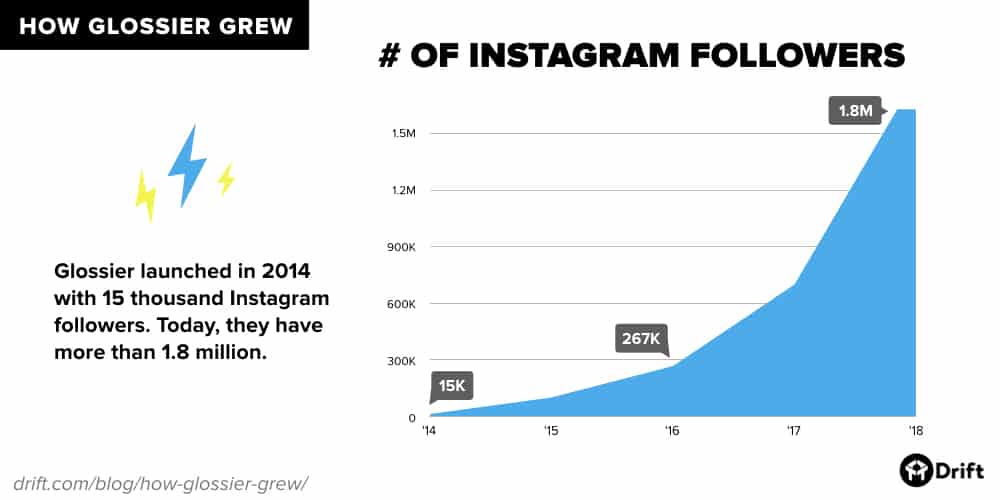
That’s right: Instagram followers.
No, it’s not your traditional growth metric, and it’s definitely not a metric that the established beauty industry brands have been keeping a close enough eye on. For many of those older brands, adapting their marketing and sales to match the new, social, real-time world their buyers live in has been a struggle.
Glossier, on the other hand, was born in the Instagram age. From the very beginning, founder and CEO Emily Weiss had a strategy in place for a building a following and for getting customers to do their marketing for them. That strategy? Encourage their customers to tell their own stories.
As Emily explained in an interview with StrictlyVC:
Glossier, in a way, is still very much a content company… Our products are crayons, and our customer is creating her own content, her own narrative, her own story.
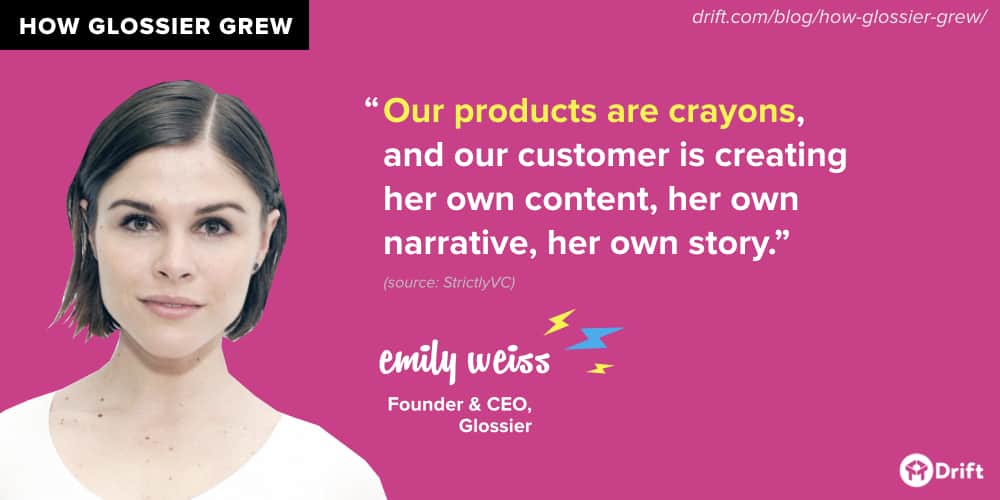
Those products, FYI, are high-quality, low-cost beauty and personal care products with (awesome) names like “Milky Jelly Cleanser,” “Mega Greens Galaxy Mask,” and “Cloud Paint.” While the names are flashy, the packaging and designs of the products themselves are subdued. The colors are washed out. (Ever hear of the color #GlossierPink? Now you have ?) And in order to inspire sharing, Glossier includes stickers with its purchases, which customers can use to personalize Glossier products.
In other words: Glossier’s products have been purposefully designed to be Instagrammable.
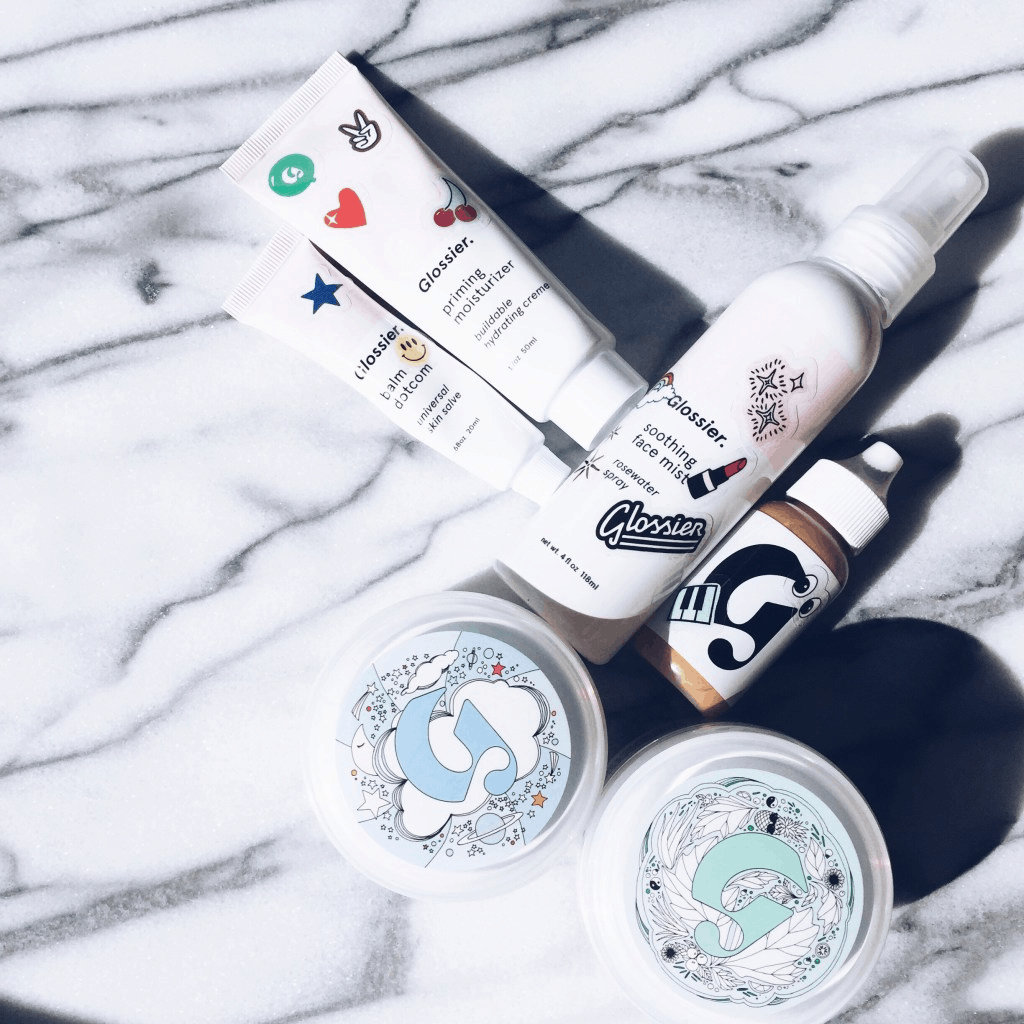
(image source: The Relevance Report)
When Glossier launched in 2014, they already had 15,000 Instagram followers, as they had created the account before they even had any products for sale. Those Instagram followers ended up being Glossier’s first customers, and as a result, the company didn’t have (or really need) a marketing team until a full year after they launched.
And while Glossier has had the most success on Instagram, it’s important to remember that they apply their strategy of encouraging self-expression across the board, for all of their channels. Ultimately, by encouraging customers to tell their own stories on social media, Emily believes Glossier can help democratize the beauty industry. As she told The Telegraph:
What we’re seeing through social media is the democratization of the beauty industry. The customer is becoming the marketer, she’s electing which brands win by posting what she’s using on social media – whether she has 200 followers, 2,000 or 2 million. Your opinion as a woman in beauty has never been more valuable.
2) Be genuine and realistic with your marketing.
As a former model and fashion assistant at Vogue, Weiss knows the beauty industry inside and out… Which means she’s also familiar with the tropes that plague marketing and advertising in that industry.
As you saw in the previous section, Glossier already avoids the industry standard of packaging their beauty products in flashy, fluorescent colors. But it doesn’t stop there.
When shooting photos for their campaigns, for example, Glossier doesn’t use DSLR cameras, which is how beauty campaigns have always traditionally been shot. Instead, they shoot everything on phones, just like their customers do. Their “models” are Glossier employees (wearing Glossier products, of course) as well as “genuine fans of all shapes, sizes, races and ages,” to quote The Telegraph, whom Glossier recruits via Instagram.
Glossier’s goal is to be authentic with their marketing and to represent the beauty industry in a more realistic light. That means highlighting customers from a diverse set of backgrounds and shedding light on the positive and negative experiences they’ve been having. As Emily once explained in an interview with Inc.:
Inclusivity is really our number one value. We want to inspire, but we also want to be realistic and show beauty in real life.”
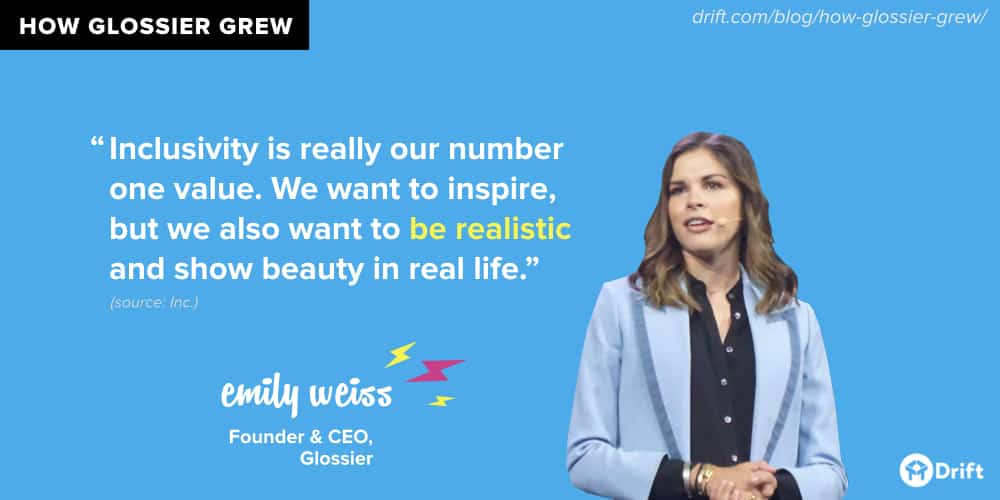
So, what does that look like in practice? It means Glossier’s marketing doesn’t bombard women with unrealistic and heavily edited images of beauty. And they don’t try to trick their customers into expecting unrealistic outcomes. Instead, they strive to be more grounded. More raw. As Emily once said in an interview with Quartz, in response to a question about beauty industry advertising tropes:
[At Glossier], we’re not going to make a commercial with wind-billowing satin, like a unicorn whispering luxury.
Instead, they’re going to keep snapping pics on their phones and keep encouraging their customers to do the same.
3) Ask your customers what they want.
In Glossier’s early days, investors tried to lump them in with other up-and-coming e-commerce brands, like Warby Parker. But Weiss refused to see her company as merely the “Warby Parker of Cosmetics.” Emily knew that Glossier was about more than just selling products direct-to-consumer or offering subscriptions services or undercutting prices. As she explained to Buzzfeed News:
We got to a point where we had to say, ‘No. We’re using the channel to build a better brand, period. We’re using the channel to actually involve the customer in ways she’s never been allowed or invited to become involved [in order] to build an incredibly inclusive movement like a better, more modern brand, which is going to become the default.’
☝️That’s how Emily sees Glossier. It’s not just a company making a splash on Instagram and selling products to its followers, it’s a company that’s inviting its followers to give feedback and share ideas and help brainstorm what its next products will be. The strength of the Glossier brand comes not only from the washed out colors, the understated packaging, and the stickers, it comes from the two-way conversations Glossier has with its customers.
On Instagram and other social apps, having those conversations means responding to every single direct message the company receives—not easy for a company with 1.8 million Instagram followers. While it doesn’t sound scalable, doing the things that don’t scale is precisely what gives Glossier an advantage here.
But Glossier doesn’t just get input from customers via Instagram — those two-way conversations happen across all of their channels, including on Slack. A few years after launching, Emily created a Slack channel for Glossier’s top 100 customers, where they exchange more than a thousand messages every week.
By having these conversations, Glossier is able to get closer to their customers than the competition and figure out exactly what types of products their customers want. And while Glossier isn’t technically what you would call a “luxury” brand, Emily argues that the type of real-time, one-on-one service Glossier provides is redefining what modern luxury looks like. As she explained to Buzzfeed News:
Luxury today is getting what you want, how you want it, when you want it, [and] getting a very personalized experience.
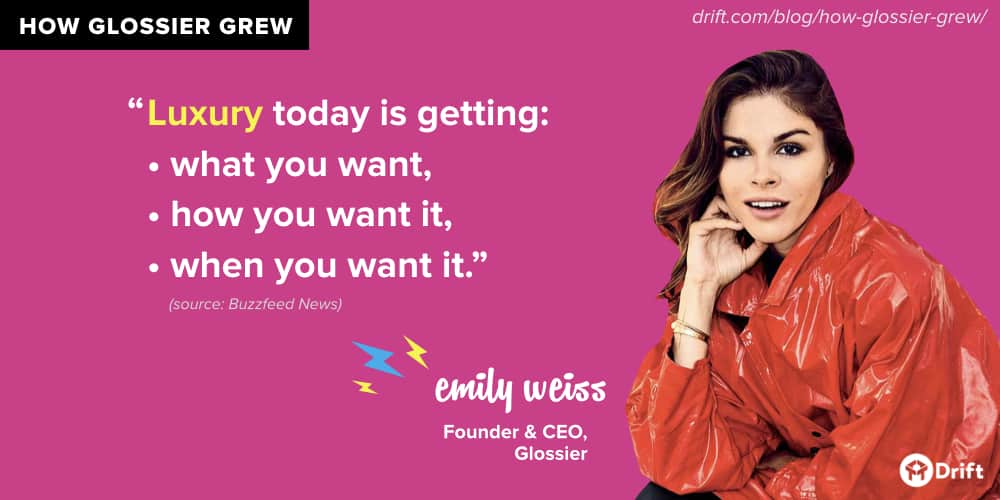
4) Acknowledge your weaknesses.
In 2016, Glossier was growing so fast, and the demand for their products was growing so huge, that the company hit a roadblock. Dubbed the “Great Inventory Stock Out of 2016” by Glossier employees, the company was regularly running out of stock on several of its best-selling products. As former Glossier chief operating officer Henry Davis explained:
That was hard for me as the COO. But the company grew so quickly, and we just didn’t have the inventory to keep up. It’s hard when your community is excited and wants to engage with you and they feel great about buying something and then you can’t give it to them.
Ultimately, Davis and CEO Emily Weiss recognized that they didn’t have the expertise or experience they needed in order to manage such a huge amount of inventory. And considering how fast Glossier was growing, they didn’t have time to become supply chain management experts themselves. (That’s not really something you can learn overnight.) So Emily did what any good CEO would do in the situation: She made an outside hire and brought in an expert — a supply chain management director from Apple.
To quote Davis: “It was very much a hard lesson learned.”
But by recognizing this weakness in the business and tackling it head-on, Glossier was able to avoid further damage. They didn’t just put a patch on the inventory issue, they thoroughly repaired it. As CEO, Emily didn’t hesitate to hand over control of a portion of the business to someone with more knowledge and experience. And she didn’t question every tiny detail or decision after that. She trusted the expert to do the job and fix the problem.
As venture capitalist Kirsten Green told Entrepreneur, it’s this ability to delegate that makes Emily so effective as a leader:
One of Emily’s greatest strengths was in recognizing the need for a business partner and charging her staff with the right responsibilities. So many entrepreneurs view their companies as their babies. They micromanage, and they stall.
Of course, that’s not to say that as CEO, Emily isn’t constantly learning new things and expanding her own skill set. With Glossier growing so fast, she has no choice but to adapt and evolve in order to match the company’s new, more ambitious goals — a fact that Emily is well aware of. However, she also has a secret for upping her CEO game. As she told Recode:
We spent the first, let’s say, two or three years making something that anyone gives a sh*t about, that’s your goal as a startup at first, you know? And now, our goal is really to build an enduring business…. So the needs of the company have changed and to the point about learning how to be a CEO, my job changes every quarter. I have a whole new set of responsibilities that I’ve never faced before. And so I lean on mentors.
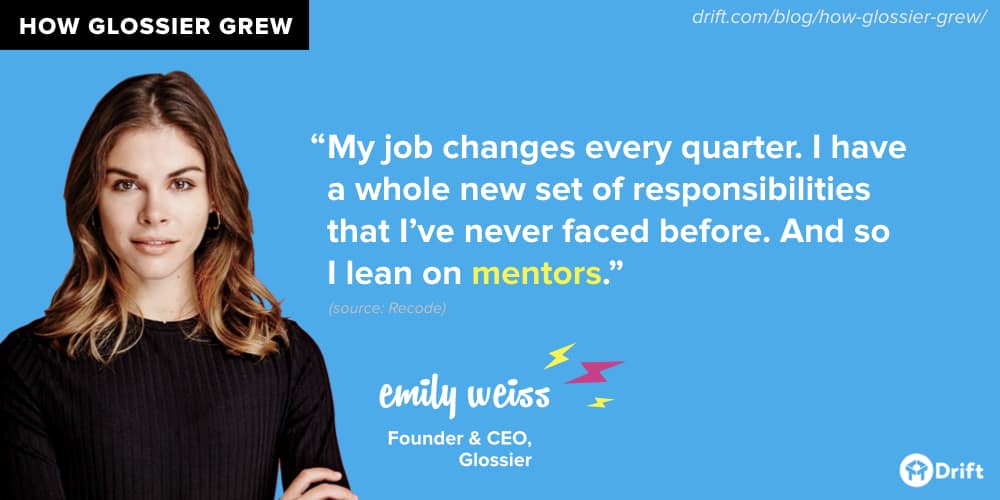
Leaning on mentors and role models is like a shortcut to unlocking growth, as you’re able to learn from the successes (and mistakes) of more experienced people who’ve come before you. To quote Emily, she’s “generally found a lot of success in surrounding myself and talking to people who are basically like two steps ahead.”
That includes Katrina Lake, CEO of the personal styling service — and publicly traded company — Stitch Fix. Katrina joined Glossier’s board of directors in 2018, so it’s probably not too much of a stretch to think that, sometime in the next few years, Emily might lean on Katrina’s experience and take Glossier public.
Final Thought
So, there you have it: The four secrets behind how Glossier grew from a beauty blog into a game-changing, global beauty brand that pulls in $100 million in annual revenue.
Here’s a quick recap of how Glossier did it:
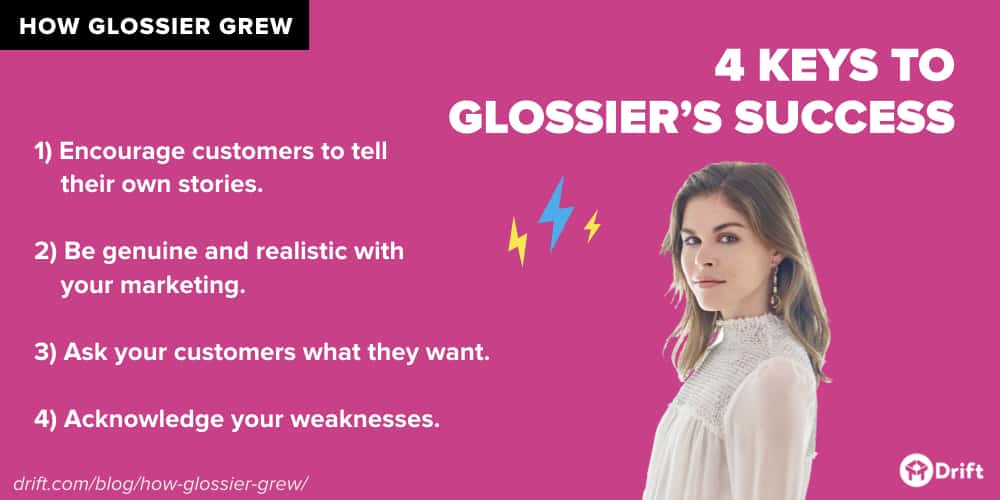
Thanks for reading!






